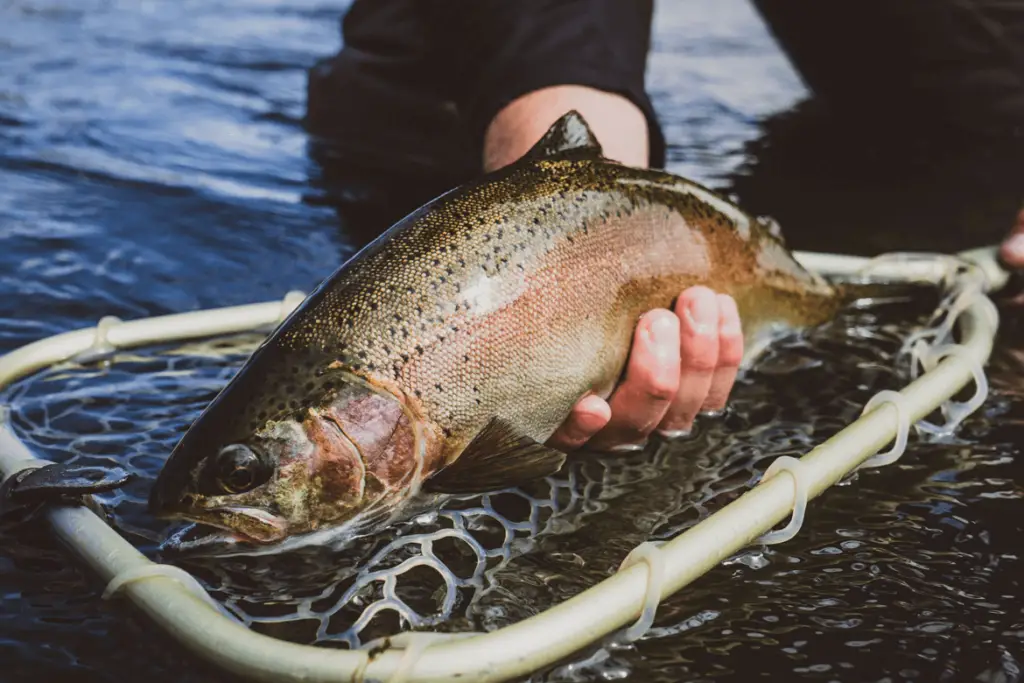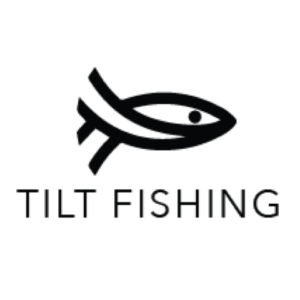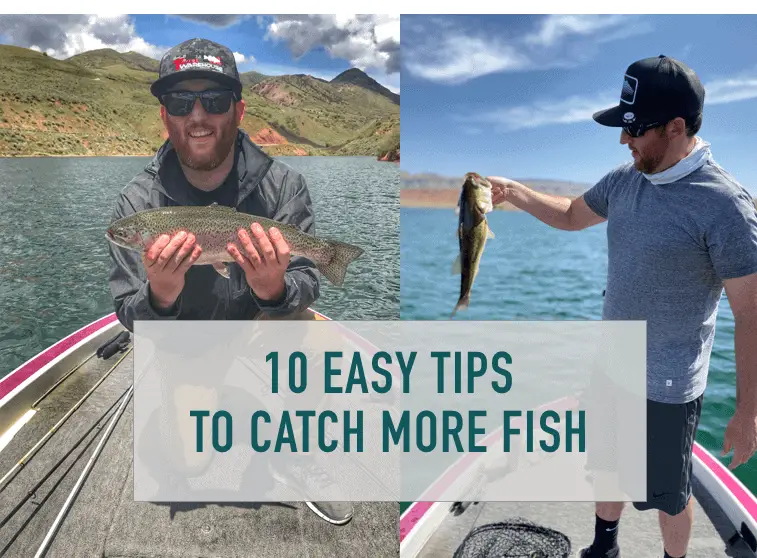Have you been out fishing but have struggled to catch fish? Don’t worry, it happens to every angler. Do you want to learn how you can catch more fish? Well, you are in the right place.
Although sometimes catching fish is outside of our control due to several factors, there are certain strategies and techniques you can do that will dramatically increase your chances of catch more fish.
In this article, we will discuss 10 simple tips you can use that will help you catch more fish the next time you head to water.
Let’s get started.
10 Easy Tips to Help You Catch More Fish
Target High Percentage Areas
The number one tip that will help you catch more fish then anything else is to target high percentage areas. By that I mean you should look for areas of the lake, pond or river you are fishing and identify where your targeted species is most likely to be located.
In general fish can be found where there is food, cover and a variety of water depths. If you can find these types of areas, you’ll catch a lot more fish. Here are some proven areas that are known for holding a lot of fish.
High Percentage Fishing Areas
- Points
- Secondary Points
- Docks
- Inlets/Creek Channels
- Hard Cover
- Humps
- Windy Banks
- Grass Lines & Flats
- Rock Piles
- Trees
- Wood
- Bridges
- Riprap
- Tullies
- Other Types of Structure and Cover
Targeting these specific areas on your fishing adventures will give you the best chance at catching a bunch of fish. All these spots are proven to hold fish and present anglers with some great fishing opportunities.
Some of these spots you can easily identify by looking at the lake and others you might need to do some research to find these key areas. (more on that later)
Make sure to check out My Recommend Gear and Tackle Guide to ensure you have the right gear for your next fishing adventure.
Match the Hatch
“Matching the hatch” is a fishing phrase or theory that just means find out the type of forage that is in the body of water you are fishing and choose a bait or lure that best mimics that forage size, color and species.
If you can identify what available forage the fish have in your body of water, what they are actively feeding on and throw baits and lures that closely resemble it. You’ll have a ton of success and catch a ton of fish.
How can you match the hatch? There are a ton of great online resources that will tell you common forage that may be found in your waters or what your targeted species commonly eat.
Here is an example, if you are fishing for smallmouth bass in a reservoir but you can’t find any information on the type of forage.
You can research what smallmouth bass typically eat and you’ll discover they love to feed on crayfish. So, with that information you now know a great bait option will be anything that resembles a crayfish.
Whether you are fly fishing, bass fishing, catfishing fishing or targeting some other species. Matching the hatch is one of the best ways to catch more fish.
Downsize Your Baits & Lures
Another easy tip you can do to catch more fish consistently is to downsize your baits and lures. Going with a smaller more “finesse” presentation will allow you to attract a wider range of fish.
This is especially important when the fish are keying in on small bait fish or forage. You’ll essentially match that hatch and look more natural to the fish, while still giving yourself the opportunity to catch both small and big fish.
What about big fish? It’s true. In general, bigger baits and lures catch bigger fish. However, that is not always the case. I’ve got caught plenty of big bass and trout using small finesse presentations.
So, if you are not having any luck or just want to catch more fish, don’t be afraid to downsize and go with a smaller more finesse presentation.
Change Colors
Although a bait or lure color may not seem like it’s that big a deal, it can be a big difference maker. Regardless if you are fishing with PowerBait for trout or targeting bass with a crankbait making sure you select the right color is crucial.
If you aren’t catching any fish on a particular color or pattern don’t’ be afraid to make a color change. Sometimes a small color adjustment is all it takes to turn the fish on and get them actively feeding.
A common mistake made by many anglers is that they don’t realize how or when to adapt their lure colors based on the given conditions. This can be a costly mistake.
Here are some color selecting tips that will ensure you choose the right color of lure or bait for your targeted specie(s):
- Best Colors for Trout Lures
- How to Choose the Right Bass Fishing Colors
- What Color of Lure Should I use?
Add Scent
Another simple tip that will help you catch more fish is to add scents to both your lures and baits. Not a lot of anglers add scent to their presentations, either because they don’t know how effective it can be or they are just too lazy.
Tipping your baits and lures with scent is not only a great way to mask unnatural scents that tend to get on your bait (usually from your hands) but it also increases the drawing power of your offering by leaving a scent trail which can attract more fish.
Another added benefit of scent is that when a fish does bite your bait, they tend to hang onto it longer, giving you more time to react and set the hook. This can-do wonders for you hook up ratio.
Mix Up Your Retrieval Speed & Cadence
There are three main reasons why a fish will bite your lure or bait; they are hungry, their predatory core response is triggered (reaction strike) or they are being territorial and are striking out of defense.
A great way to catch more fish is to get a fish to react to your lure (reaction strike). Fish are opportunistic predators and can’t help but take advantage of easy meals.
If you can present your lures in a way that looks like a wounded fish or easy meal, they can’t help but bite. This best way to do this is by mixing up your retrieval speeds and mixing in some jerks and pauses.
Sure, a simple straight retrieve will catch you fish, but you’ll catch a lot more if you mix things up. When you cast your lure out try reeling it in faster than the time before or give it a few pauses or twitches. You’ll be surprised by how many more fish you’ll catch by doing this.
Do Some Research
Much like anything doing your research ahead of time and being prepared is extremely important and will give you a huge advantage even before you hit the water.
There are ton of great apps, books, maps and online resources that will provide you with some great information on forage, productive fishing areas, water clarity, seasonal patterns, weather conditions and so much more.
Here is a list of some of my favorite tools and resources I use to help me find good fishing spots:
Google Earth – I use google earth to scout out lakes, ponds, reservoirs ahead of time and it will even let you go back in time and look at low water years to help you identify key structure. This is a free tool that every angler should use.
Navionics Web App – the Navionics web app is another great tool that shows you a ton of different lake maps with contour lines, helping you scout out some key spots ahead of time. The also have a mobile app that you can download to you phone. This is super helpful when looking for good fishing spots.
YouTube/Websites – there are also a ton of different online articles, information and YouTube videos that can provide you with some great information. I would highly recommend checking these out as well.
Far too often post people that go fishing just kind of wing it. Take advantage of these resources and you’ll end up catching a lot more fish.
Change Baits & Lures

A common mistake that I have made in the past and one that I see plenty of other anglers make as well. Is sticking with the same bait or lure for too long.
For whatever reason, fish can be finicky and prefer a certain style, color or method of fishing over others on any given day. What worked last week, yesterday or even in this morning may not necessarily work later on.
As fishing conditions change, certain lures and baits will work when others won’t. That’s why it’s important to change things up if something is working.
If I’ve been fishing with one lure or bait for over 15 to 30 minutes and I haven’t received any positive reinforcements (bites, fish caught etc.) indicating I’m using the right thing. I’ll switch it up until I can find something that is working.
Target Different Depths
Fishing the right depth is key if you want to be able to catch fish. If you are not fishing where the fish are, you’ll have a hard time finding success.
Each species of fish will prefer to be at a different depth and a lot of it will depend on the water temperature and time of the year.
For example, largemouth bass prefer to be shallow hiding out in grass and cover. While trout tend to roam around out deep in the open.
However, fish will move around as conditions and seasons change and will move deeper when it gets hot or shallower to feed up on baitfish, and so on and so forth.
Because of this I like to have a variety of lures that will allow me to target the different depths. I’ll experiment with each until I find where the fish are positioned.
Adapting your lures and presentation based on the depth will allow you to quickly and effectively find and catch more fish than simply just throwing something out there.
Fish During Prime-Time hours
Without getting too complicated, fishing is all about increasing your chances of catching fish by putting yourself in the best position to trick or fool a fish into striking.
One of the best ways that you can position yourself to catch more fish is to fish during what I call the “prime time hours”.
The prime-time hours are the times of the day where the odds are in your favor of catching fish. In my experiences fishing is always best in the early mornings, at dusk, at night and when its windy or cloudy.
If you can plan your fishing outings around one of these periods, you’ll have a way better chance at catching more fish.
For more insight on when the prime-time fishing hours are, check out this article: When is the Best Time to Go Fishing?
Other Resources to Help You Catch More Fish
- 20 Pond Fishing Tips to Catch More Fish
- 20 Trout Fishing Tips to Catch More Fish
- Not Catching Bass? 12 Reasons Why Bass Aren’t Biting
- 25 Banks Fishing Tips to Catch More Fish
Final Thoughts
As anglers we can’t always control or predict how good the fishing is going to be on a given day. There are many variables and factors that are outside of our control like cold fronts, water temperature, seasonal behavior etc.
However, there are certain tips and tricks we can utilize that will increase or odds at getting bites and that will help us catch more fish regardless of the circumstances we face.
I would encourage you to re-read this article and practice the fishing tips we discussed, and I guarantee you’ll catch more fish and become a more effective and efficient angler.

